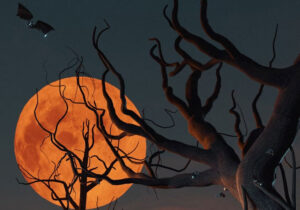Do You Still Remember Coraline?
She’s the blue-haired girl who loves to explore. One day, she crawled through a little door into a world that was sweeter, brighter, and more obedient—too good to be true. Coraline (2009)wasn’t just a spooky animated adventure. It opened the door to an entire era of gothic fairytale aesthetics.
Button eyes, stitched smiles, eerie doubles, and shadows behind pastel colors—that’s the visual language Coraline made iconic. And at its heart was a deep loneliness and a child’s quiet rebellion against being ignored.
Today, that same unsettling charm has found a new home: in the soft, torn seams of the Deddy Bears.

Deddy Bears: A Teddy with a Shadowed Past

Deddy Bears are not your average plush toys. At first glance, they’re cuddly—but look again, and you’ll find something’s… off.
Torn stitching, hollow eyes, and stitched-up mouths hint at something broken beneath the fluff.
Some wear medical patches. Others have bandages, safety pins, or faded bloodstains.
One might smile—but it’s the kind of smile that makes you uneasy.
If Coraline gave us a world of illusions behind the wallpaper, Deddy Bears are what came back with you from that world.
Coraline and Deddy Bears: A Shared Spirit
Coraline’s doll was a trap. Deddy Bears aren’t traps—they’re manifestations of emotion. They don’t try to trick you—they show you who you really are.
| Theme | Coraline | Deddy Bears |
| 💀 Toy Motif | A hand-sewn doll replica | Torn, stitched-up teddy bears |
| 🧠 Emotional Core | Loneliness, control, longing | Fear, rage, trauma projection |
| 🎨 Aesthetic | Muted tones + fine textures | Dusty grays, reds, visible scars |
| 🪞 Mirror World | An illusion of perfection | A plush-skinned nightmare made real |
Coraline questioned the “perfect” world behind the door. But Deddy Bears don’t give you an exit. They don’t pretend to be friends. They are your fears—stitched and stuffed.
Creepy Cute: An Aesthetic for the Emotionally Complicated
In pop culture, TikTok, and the alt-art scene, “Creepy Cute” has become a language of its own.
This aesthetic combines childlike innocence with disturbing detail—cuteness wrapped around trauma. Because it speaks to a modern emotional state:
We want comfort—but we don’t trust anything perfect.
We crave childhood—but we also want to destroy the parts of it that hurt.
Deddy Bears are the plush embodiment of that contradiction. They’re adorable but broken. And somehow, they understand you.
Not Just Toys—Adult Fairytales in Disguise
If Coraline is a dark tale for children who feel too much, Then Deddy Bears Fairytales are dark toys for adults who still feel like children.
They remind us that emotional wounds don’t vanish with age and evolve and become collectibles, inside jokes, plush comfort objects with sharp teeth.
Deddy Bears aren’t trying to heal you. They’re trying to be with you, in your mess, without fixing it.
In the End…
In a world where even candy-colored dreams carry sharp edges, we need an aesthetic that embraces our contradictions. Deddy Bears speak in stitched-up whispers, saying:
“You’re scared. You’re angry. You’re not alone.”
Coraline chose to leave the perfect nightmare behind. But what if… you decide to move in with the Bear?